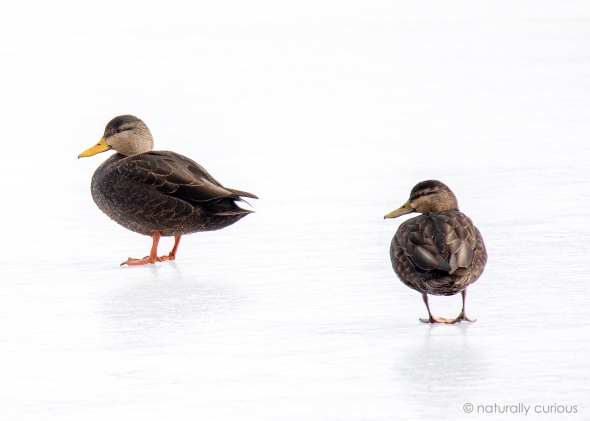American Black Ducks Vs. Mallards
 American Black Ducks (Anas rubripes), found year-round in all parts of New England except for northern Maine, are nearly identical to Mallards (Anas platyrhynchos) in size, shape and voice. Both have rounded heads, thick bills, and bulky bodies. Like other dabbling ducks they sit high in the water with their tails high. These two closely related species often keep company with each other and it can be challenging to tell them apart, but it is possible to distinguish them with some certainty.
American Black Ducks (Anas rubripes), found year-round in all parts of New England except for northern Maine, are nearly identical to Mallards (Anas platyrhynchos) in size, shape and voice. Both have rounded heads, thick bills, and bulky bodies. Like other dabbling ducks they sit high in the water with their tails high. These two closely related species often keep company with each other and it can be challenging to tell them apart, but it is possible to distinguish them with some certainty.
Most of the year male (drake) Mallards have a distinctive iridescent green head, a white neck ring and a yellow bill. However, the female (hen) Mallard’s plumage is very similar to that of both drake and hen Black Ducks. One of the most dependable ways to tell these two species apart is to look for the dark chocolate-colored body of the Black Duck, which is noticeably darker than the hen Mallard’s. At rest, the Black Duck is a uniform very dark brown from the bottom of its neck to its tail. The hen Mallard is a much lighter brown in this area, and in addition has a pale whitish patch on the belly. The color of the bill can also help with identification — the hen Mallard’s bill is orange and black, whereas the Black Duck’s bill ranges from a dusky yellow (drake) to a drab olive (hen) color. All of these identification clues go out the window when hybrids of these two species are encountered! (Photo: American Black Duck drake (L) and hen (R) )
Naturally Curious is supported by donations. If you choose to contribute, you may go to http://www.naturallycuriouswithmaryholland.wordpress.com and click on the yellow “donate” button.


















What Other Naturally Curious People Are Saying